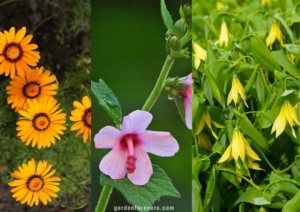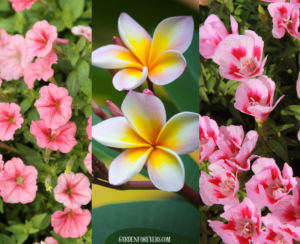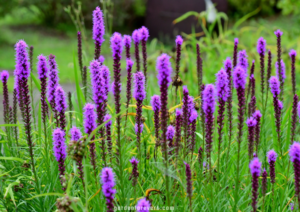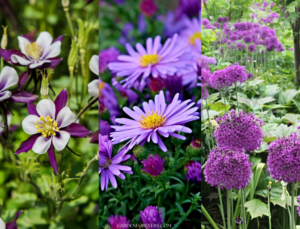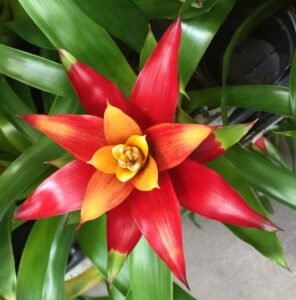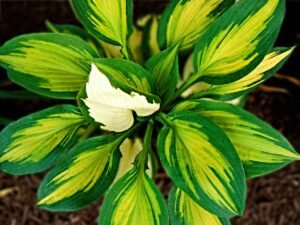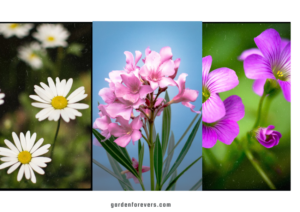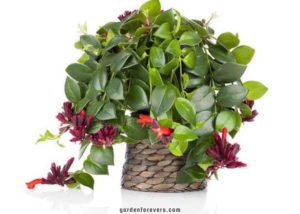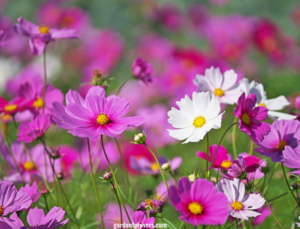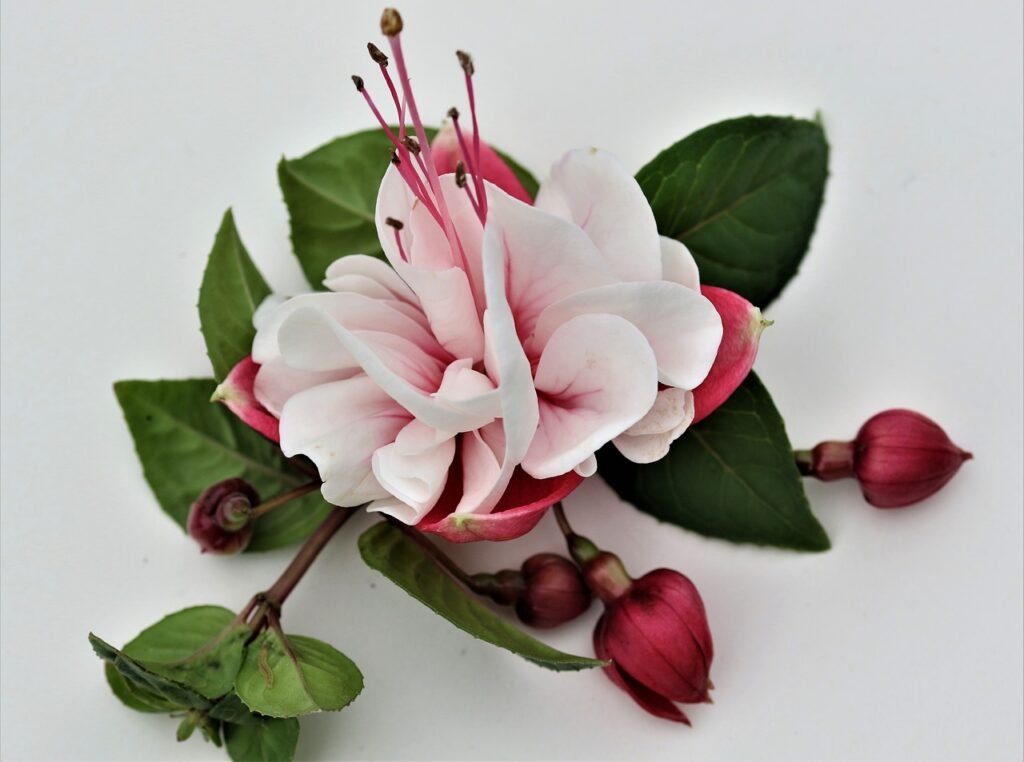20 Beautiful Flowers That Start With J: for Your Garden Inspiration

Introduction to Flowers That Start With J
Are you looking to create a stunning garden filled with vibrant colors and exquisite blooms? Flowers that start with the letter “J” offer a delightful range of choices that will enhance the charm of any outdoor space. From classic favorites like Jasmine to unique beauties like Jacob’s Ladder, each of these “J” flowers adds its own personality, elegance, and character to a garden. These blooms captivate with their shapes, colors, and fragrances, creating an inviting haven for both seasoned and new gardeners alike.
Why Choose flowers that start with the letter j ?
Flowers starting with the letter ‘J’ are unique and diverse, each offering something special to your garden. They range from fragrant vines to exotic perennials and charming annuals, making them perfect for various styles of gardening. Whether you’re designing a thematic garden or simply adding new blooms to your collection, these flowers add personality, color, and symbolism to any outdoor space. Let’s explore 25+ flowers that start with ‘J,’ along with their care tips and the beauty they bring.
1. Jasmine

Description: Jasmine is a fragrant, vining shrub known for its delicate, star-shaped white or yellow flowers. Often blooming in summer, it fills gardens with a sweet, exotic aroma. Thriving in full sun and well-drained soil, Jasmine is ideal for trellises, containers, and ground covers, adding elegance to outdoor spaces.
- Sunlight: Full to partial sun.
- Soil: Well-drained, loamy soil.
- Water: Keep soil moist but avoid waterlogging.
- Spacing: 2-4 feet apart to allow spreading.
2. Jacob’s Ladder

Description: Jacob’s Ladder (Polemonium) is a lovely perennial with clusters of blue or white, bell-shaped flowers and unique foliage that resembles the rungs of a ladder. Ideal for shady gardens, it thrives in moist, well-drained soil and adds a delicate, natural charm to borders, rock gardens, and woodland settings.
- Sunlight: Partial shade.
- Soil: Moist, well-drained soil rich in organic matter.
- Water: Water regularly, especially in dry spells.
- Spacing: 12-18 inches apart for healthy growth.
3. Japanese Anemone

Description: The Japanese Anemone (Anemone hupehensis) is a graceful perennial known for its elegant blooms in shades of pink or white, often featuring contrasting dark centers. Blooming in late summer to fall, it thrives in partial shade and moist, well-drained soil, making it a favorite for cottage gardens and woodland settings.
- Sunlight: Full sun to partial shade.
- Soil: Rich, well-drained soil.
- Water: Water well during growing season.
- Spacing: 1-2 feet apart.
4. Joe-Pye Weed

Description: Joe-Pye Weed (Eutrochium purpureum) is a tall, perennial wildflower known for its clusters of small, pink to mauve flowers that bloom in late summer and attract butterflies. Thriving in moist, well-drained soil, it prefers full sun to light shade and can grow up to 7 feet tall, adding elegance to gardens.
- Sunlight: Full sun to light shade.
- Soil: Moist, rich soil.
- Water: Needs consistent moisture.
- Spacing: 2-4 feet apart for airflow.
5. Johnny Jump Up

Description: Johnny Jump Up (Viola tricolor) is a charming, small perennial known for its vibrant, tri-colored flowers featuring purple, yellow, and white hues. This hardy plant thrives in cool seasons, making it perfect for borders and ground cover. It attracts pollinators and adds a cheerful splash of color to any garden.
- Sunlight: Full to partial sun.
- Soil: Loamy, well-drained soil.
- Water: Keep soil consistently moist.
- Spacing: Plant 6-9 inches apart.
Read more: 12+ Stunning Flowers That Start With A; make your garden
6. Jerusalem Sage

Description: Jerusalem Sage (Phlomis fruticosa) is a striking perennial known for its vibrant yellow flower clusters atop sturdy stems. With soft, gray-green foliage, it thrives in full sun and well-drained soil. This drought-tolerant plant attracts pollinators, making it a perfect addition to Mediterranean gardens and landscapes
- Sunlight: Full sun.
- Soil: Well-drained, sandy or gritty soil.
- Water: Drought-tolerant once established.
- Spacing: Plant 2-3 feet apart.
7. Jewelweed

Description: Jewelweed (Impatiens capensis) is a vibrant wildflower native to North America, known for its orange or yellow trumpet-shaped blooms. It thrives in moist, shaded areas like wetlands and forests. Jewelweed’s sap is traditionally used to soothe skin irritations, particularly from poison ivy, making it a natural remedy.
- Sunlight: Partial shade.
- Soil: Moist, rich soil.
- Water: Needs regular watering.
- Spacing: Space plants 1 foot apart.
8. Jungle Flame

Description: The Jungle Flame, also known as Ixora coccinea, is a vibrant, tropical shrub with clusters of bright red, orange, or yellow flowers. Native to India and Southeast Asia, its dense, evergreen foliage makes it a popular choice for hedges and gardens. It thrives in warm climates, attracting butterflies and hummingbirds. If you’re looking for an easy-to-grow flower for your garden, I highly recommend this one. It thrives effortlessly and will add vibrant beauty to your outdoor space with minimal care.
- Sunlight: Full sun to partial shade.
- Soil: Moist, well-draining soil.
- Water: Water regularly in warm seasons.
- Spacing: 1-2 feet apart.
9. Japanese Iris

Description: The Japanese iris, or Iris ensata, is a stunning perennial plant known for its large, elegant flowers that bloom in various colors, including blue, purple, and white. Thriving in wet soil, it often grows near ponds and streams. Its intricate petals and graceful foliage make it a popular choice in gardens and traditional Japanese landscapes.
- Sunlight: Full sun to partial shade.
- Soil: Acidic, moist soil.
- Water: Keep soil consistently moist.
- Spacing: 2-3 feet apart.
10. Jatropha

Description: Jatropha is a genus of flowering plants in the spurge family, Euphorbiaceae. Known for its drought resistance, it produces seeds rich in oil, often used for biodiesel production. Jatropha can grow in poor soils and is native to tropical regions, making it a potential sustainable energy source.
- Sunlight: Full sun to partial shade.
- Soil: Well-drained soil.
- Water: Water moderately, tolerates drought.
- Spacing: Plant 2-4 feet apart.
11. Japanese Wisteria

Description: Japanese wisteria, or Wisteria floribunda, is a stunning climbing vine known for its cascading clusters of fragrant purple, pink, or white flowers. Blooming in spring, its blossoms create a breathtaking spectacle, often adorning arbors and trellises. The vine can grow up to 30 feet long, making it a popular choice in gardens.
- Sunlight: Full sun.
- Soil: Moist, well-drained soil.
- Water: Regular watering in dry periods.
- Spacing: Plant 10-15 feet apart for optimal growth.
12. Jack-in-the-Pulpit

Description: Jack-in-the-Pulpit is a distinctive wildflower found in North American forests. Characterized by its hooded spathe, which resembles a pulpit, it features a central spike called a spadix. This perennial plant blooms from spring to early summer, displaying greenish to purplish colors, and thrives in shaded, moist environments.
- Sunlight: Partial to full shade.
- Soil: Rich, moist soil.
- Water: Keep soil consistently moist.
- Spacing: Space plants 1 foot apart.
13. Japanese Maple

Description: The Japanese Maple (Acer palmatum) is a small, ornamental tree known for its delicate, lobed leaves that change vibrant colors throughout the seasons, from green to stunning shades of red, orange, and yellow in autumn. It’s prized for its graceful form and is a popular choice in gardens and landscapes.
- Sunlight: Partial shade.
- Soil: Well-drained, acidic soil.
- Water: Regular watering during growing season.
- Spacing: Plant 10 feet apart for optimal growth.
14. Jungle Geranium

Description: The Jungle Geranium (Ixora coccinea) is a vibrant tropical shrub known for its dense clusters of small, star-shaped flowers, ranging in color from fiery red to orange, pink, and yellow. Native to South Asia, it’s popular in gardens for its long-lasting blooms and glossy, dark green leaves.
- Sunlight: Full sun to partial shade.
- Soil: Well-drained, loamy soil.
- Water: Water consistently, especially in warm weather.
- Spacing: 2-3 feet apart.
Read more: Top 15 Stunning ‘Flowers That Start With ‘P’
15. Japanese Camellia

Description: The Japanese Camellia (*Camellia japonica*) is an evergreen shrub known for its stunning, waxy, rose-like flowers that bloom in shades of red, pink, or white. Native to East Asia, it has glossy, dark green leaves and thrives in partial shade. Valued for its beauty, it symbolizes elegance and longevity.
- Sunlight: Partial shade.
- Soil: Acidic, well-drained soil.
- Water: Water regularly, avoiding waterlogged conditions.
- Spacing: Plant 3-5 feet apart.
16. Jerusalem Artichoke

Description: The Jerusalem artichoke, also known as sunchoke, is a tuber from the sunflower family. Despite its name, it’s unrelated to artichokes and originates from North America. Its knobby, potato-like appearance conceals a nutty, slightly sweet flavor. Rich in inulin, it’s prized for its health benefits and culinary versatility.
- Sunlight: Full sun.
- Soil: Sandy, well-drained soil.
- Water: Water regularly, especially in dry spells.
- Spacing: 1-2 feet apart.
17. Japanese Blood Grass

Description: Japanese Blood Grass (Imperata cylindrica ‘Red Baron’) is an ornamental grass known for its striking red-tipped foliage, which deepens in color throughout the growing season. It forms clumps of slender, upright leaves, creating a bold visual contrast in gardens. This hardy, low-maintenance plant thrives in full sun and well-drained soil. This flower plant is incredibly easy to grow in your garden all year round, requiring no hassle while offering stunning blooms that will brighten your home with vibrant colors.
- Sunlight: Full sun.
- Soil: Moist, well-drained soil.
- Water: Water regularly.
- Spacing: Space 1 foot apart.
18. Juneberry (Amelanchier)

Description: Juneberry (Amelanchier) is a deciduous shrub or small tree known for its white spring flowers, purple-blue edible berries, and vibrant fall foliage. Native to North America, it thrives in a variety of soil types. The berries resemble blueberries and are rich in vitamins, making them popular for jams, pies, and wildlife.
- Sunlight: Full sun to partial shade.
- Soil: Well-drained, loamy soil.
- Water: Water consistently.
- Spacing: 10 feet apart.
19. Jasmine Tobacco

Description: Jasmine Tobacco is a fragrant blend combining the rich, earthy aroma of tobacco with the sweet, floral notes of jasmine. This unique mix creates a warm, soothing scent with a hint of freshness. It’s often used in perfumes or home fragrances to evoke a sense of elegance and calm relaxation.
- Sunlight: Full sun to partial shade.
- Soil: Rich, well-drained soil.
- Water: Keep soil consistently moist.
- Spacing: Plant 12-18 inches apart.
20. Japanese Pieris

Description: Japanese Pieris (Pieris japonica) is an evergreen shrub known for its striking foliage and cascading clusters of bell-shaped flowers. Its new leaves emerge vibrant red before maturing to dark green. In early spring, it produces white or pink blooms, making it a popular ornamental plant for gardens.
- Sunlight: Partial shade.
- Soil: Acidic, well-drained soil.
- Water: Water regularly in warm months.
- Spacing: 3-4 feet apart.
Why You Should Add “J” Flowers to Your Garden
Flowers that start with the letter “J” bring beauty, color, and charm to any garden setting. From the fragrant Jasmine to the exotic Jacaranda, these blooms offer a wide range of appearances and symbolic meanings. Using these flowers can add depth, fragrance, and a unique appeal to your garden.


